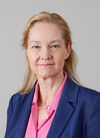Cecilia Skingsley: Post-pandemic monetary policy and the future of the interest rate as a policy tool
Speech by Ms Cecilia Skingsley, Deputy Governor of the Sveriges Riksbank, at Nordea's webinar on central banks in transformation, 7 October 2020.
The views expressed in this speech are those of the speaker and not the view of the BIS.
The coronavirus pandemic has had a dramatic impact on the economic playing field. For the second time in a little more than a decade, governments and central banks around the world have needed to take powerful measures to alleviate, as far as possible, a recession and try to prevent lasting damage to the economy.
One result of this has been that an increasing number of central banks now find themselves in a situation where inflation is undershooting the target and the policy rate is at or close to its lower bound. In some economies, such as the euro area and Sweden, the policy rates have been low for a long time. But the pandemic has also meant that, for instance, the US Federal Reserve, which as recently as just over a year ago had a policy rate of more than 2 per cent, has had to quickly lower it to basically 0 per cent. Thus, one could say that the monetary policy playing field has become more even.
Another observation is that central banks' inflation forecasts now tend to lie below their respective targets, not just in the short term, but also at the end of the forecast period. This is the case with the Riksbank's and the ECB's forecasts, but also the Federal Reserve's forecasts are below the target for two years ahead, not reaching target level until 2023. It appears to be the case that central banks are increasingly making the assessment that they will have difficulty conducting a sufficiently expansionary policy to bring inflation back on target as quickly as usual.

